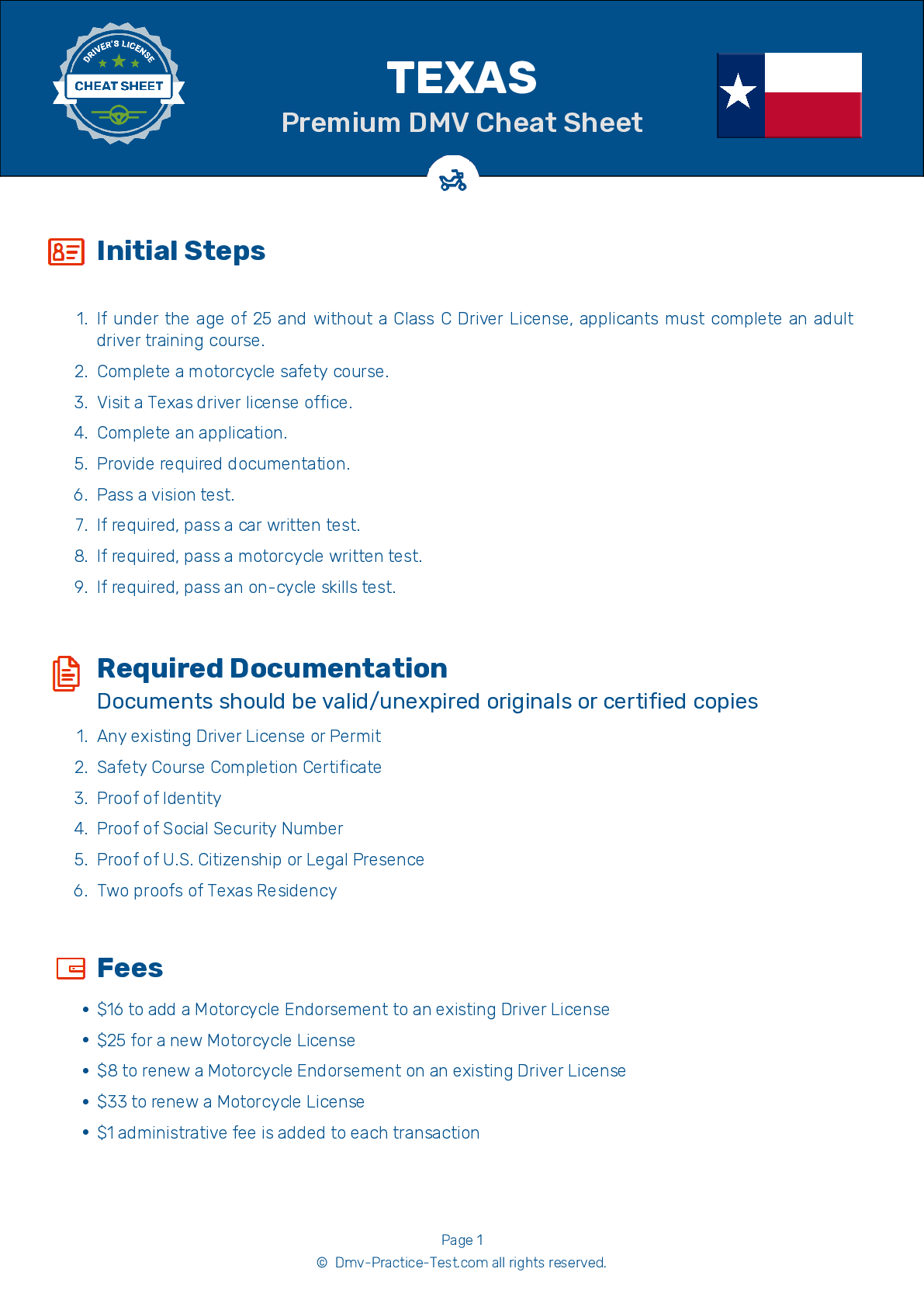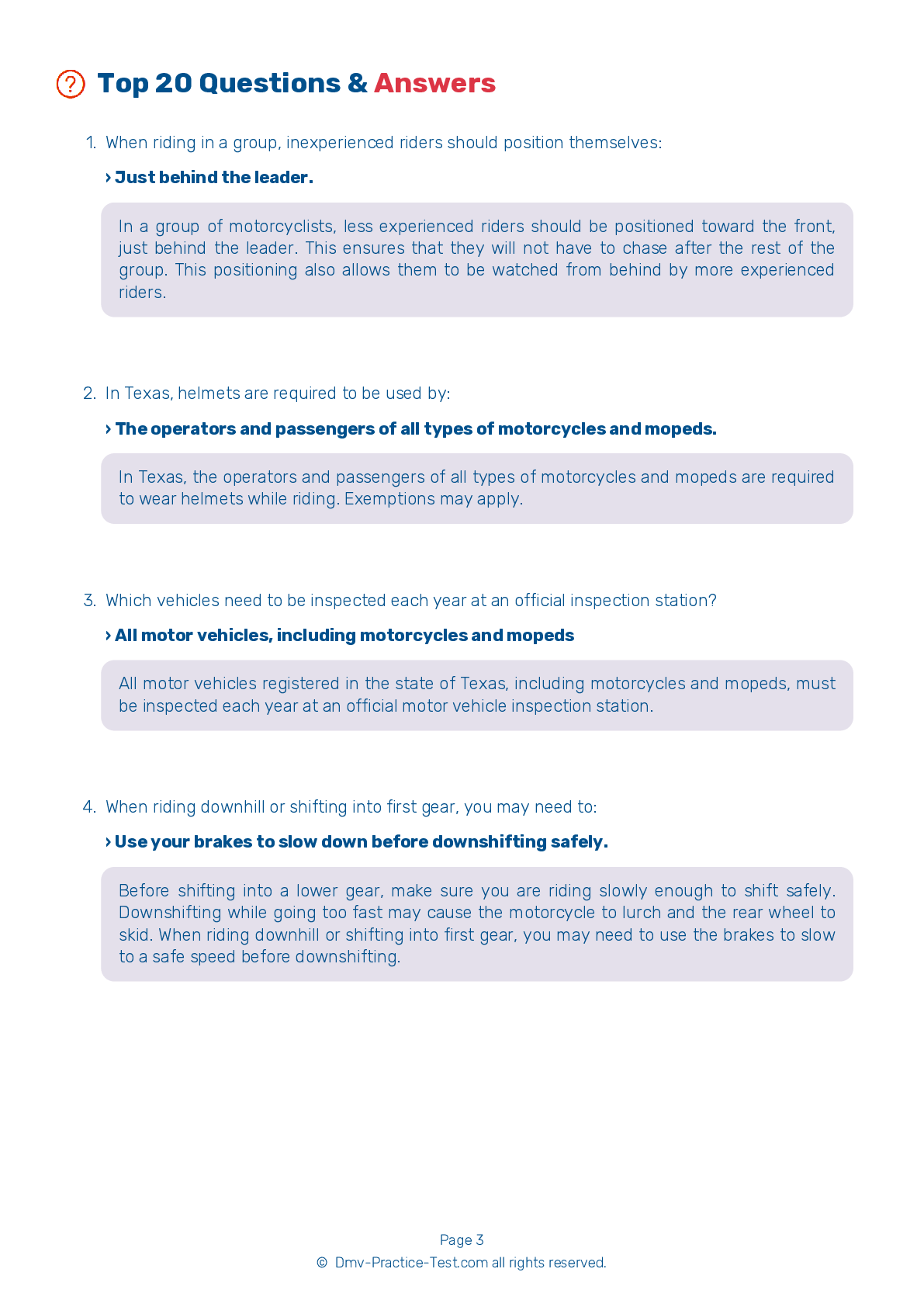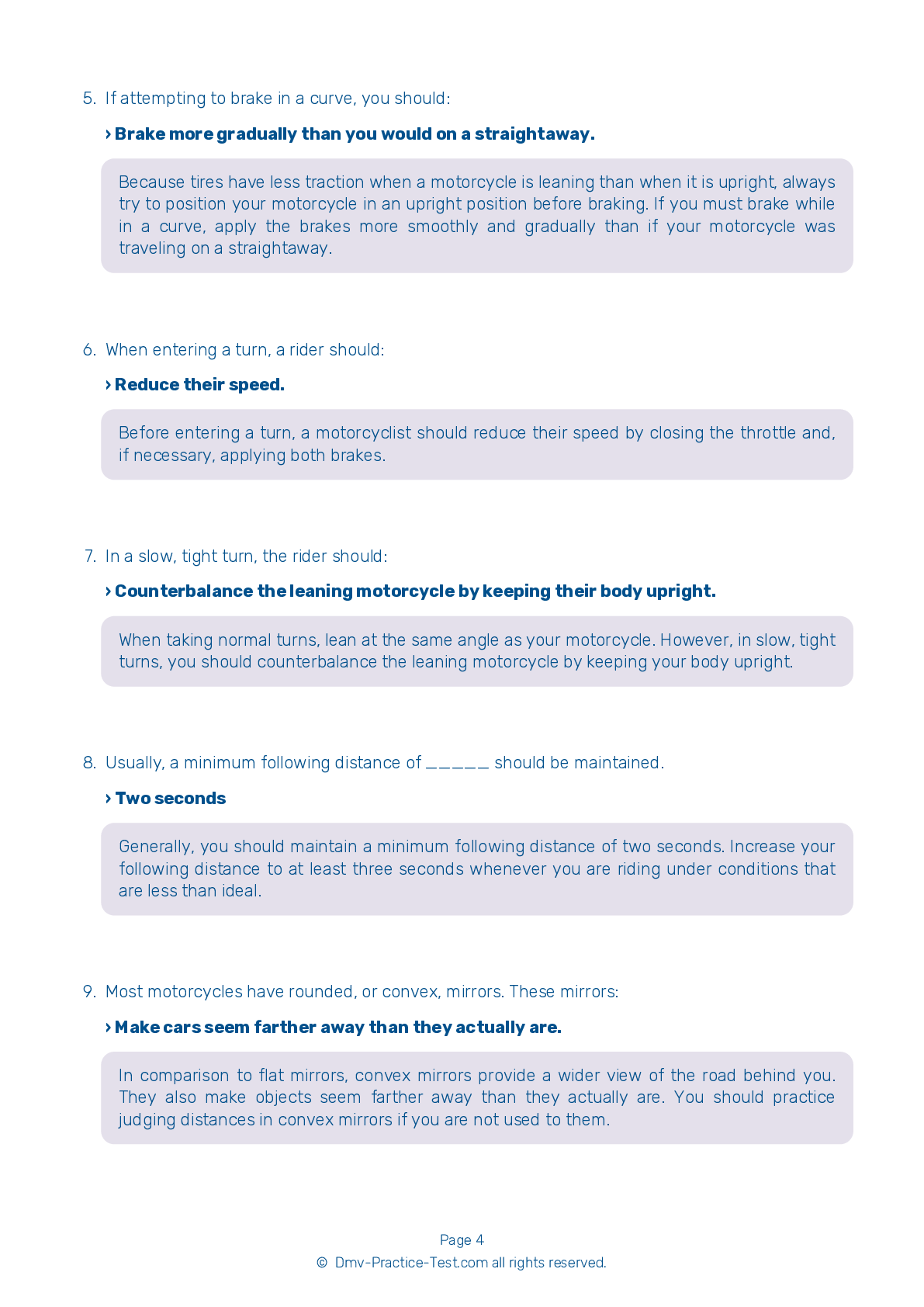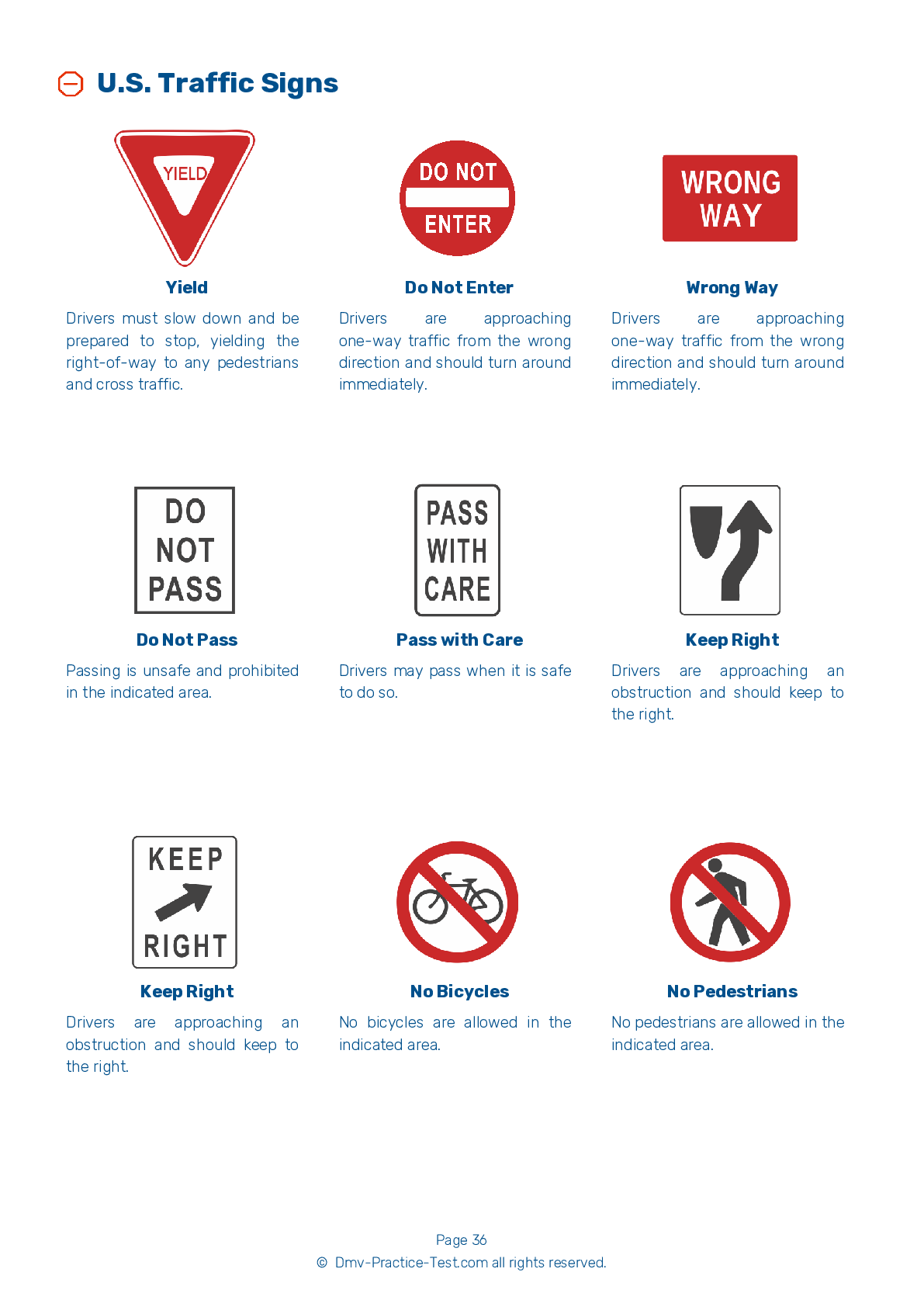Motorcycle Test | License TX 2025 | FREE Online Practice! #3
Take this FREE motorcycle test (license in TX 2025) to check your knowledge of the road rules. To improve your results, download a motorcycle handbook online, study theory, and practice for free on our website. Still worried about how to get a motorcycle license in Texas in 2025? Check our website for more sample tests, train as much as possible, and boost your grades!
1 . When riding in a group, motorcyclists:
When riding in a group, you should maintain close ranks but still keep an adequate space cushion around each rider.
2 . The center portion of a traffic lane is where:
The centermost portion of a lane is where debris and oil drippings from cars often collect. Other hazards, such as utility hole covers, can also be found in the centermost portion of the lane.
3 . Before riding, a motorcycle operator should check the clutch. A properly working clutch should feel:
Check your clutch and throttle before riding your motorcycle. The throttle should snap back when you let go and the clutch should feel tight and smooth.
4 . A motorcycle may park in a striped access aisle next to a handicap parking space:
Do not park your motorcycle in the striped areas adjacent to handicap parking spaces. The striped areas are for wheelchair lifts.
5 . Court costs for a Driving While Intoxicated (DWI) conviction start at:
There are numerous potential consequences for a DWI conviction. Among them is being required to pay court costs, which start at $70.
See the exact questions that will be on the 2025 Texas DMV exam.
99.2% of people who use the cheat sheet pass the FIRST TIME
Jeneen was tired of paying $5/gallon. She got herself a scooter that required the motorcycle license. She studyed the motorcycle test cheat sheet and passed her test the next day!
Christopher tells us how he knew nothing prior to obtaining the motorcycle study guide, and he only got one question wrong because he clicked on the wrong answer by mistake.



